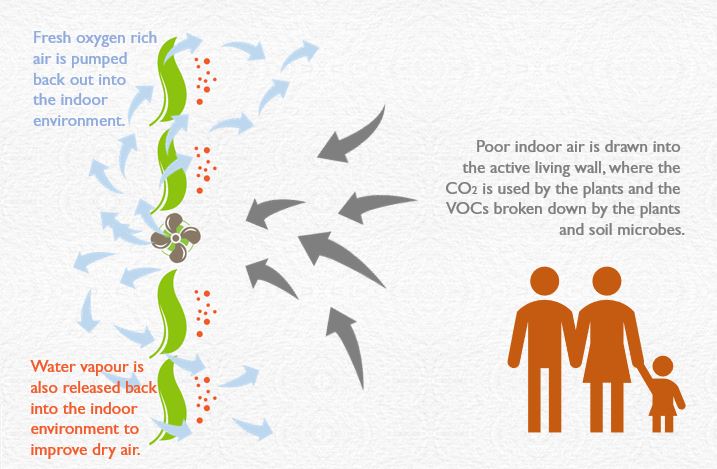
LEED on: Living walls are getting ever better at cementing a building’s green credentials
-
16 October 2017
Living walls will soon be working even harder to give us cleaner office air and more productive working environments.
The air we breathe is a vital yet largely unnoticed element of our day-to-day life but, increasingly, air quality is becoming a growing issue, not just out on traffic-clogged streets, but also inside, where we live and work.
We may not realise it, but indoor air quality (IAQ) in workplaces is often far from fresh, thanks to air conditioning and often-closed windows, yet clean, fresh air is very good for business, not least through green credentials and improved productivity.
The living wall is a good example of how investing in fresh air can score environmental and financial points in one go.
Living walls are one of the most effective ways of planting fresh air in the office, as they can be densely packed with a range of hard-working plants and can cover large areas.
If you are considering getting LEED certification, you may be interested to know that the presence of a green wall in a workplace is worth up to 36 of the 40 credits required for a building to be LEED-certified.
What’s more, research has proven time and again that office plants can rid the air of the many toxins, such as volatile organic compounds and carbon dioxide, found in indoor air as well as restore lost humidity to the atmosphere, bossing our wellbeing and energy levels in one go.
This, added to the restorative effect of simply seeing greenery from our desk, means the office plants can noticeably boost productivity.
Living walls, with their ability to hold many plants, are superb air cleaners, and large ones can provide a view of greenery for many workers in one go, so they are a great choice for both clean air and biophilic mood-boosting.
What’s more, they are about to take a giant leap forward in keeping our indoor air clean.
Active Living Walls

Green wall developers are currently making great strides in designing active systems to actually channel air flow to the parts of plants which metabolise harmful, airborne substances.
These active living walls can absorb particulate matter 8 times more effectively, and VOCs such as formaldehyde are absorbed 3 times more effectively.
They work by using a ventilation system to capture polluted air and deliver it directly to the green wall, injecting it into the soil around the roots of the plants.
This allows the bacteria in the soil to metabolise the pollutants, turning it into nutrient compounds. Soil bacteria are extremely effective at absorbing and metabolising nitrogen dioxide, for example, and turning into fertilizing compounds which the plant can then absorb.
The air is then channelled to flow out of the pot and around the leaves of the plants, where they can absorb more pollutants.
Active living walls are inevitably more expensive than a standard green wall system, but the effects on air quality are considerable. According to the International Frequency Sensor Association, an active green wall with built-in controls can absorb particulate matter eight times more effectively, while VOCs are absorbed three times more effectively.
We think active green walls are ones to watch in the office plant industry. As we discover more and more about the business case for clean air, these systems could make all the difference to workplace wellbeing and productivity.
For more information on how office plants and living walls are good for business, see our Value of Plants campaign.
